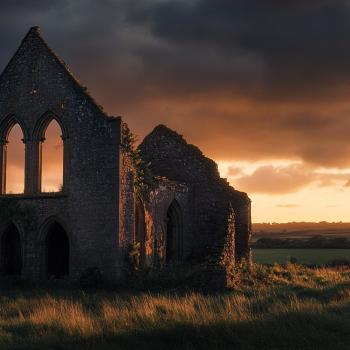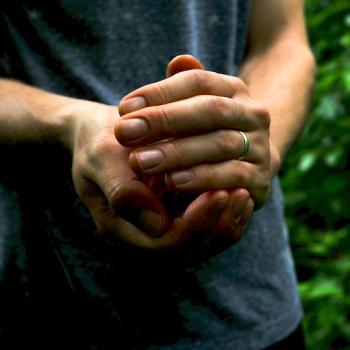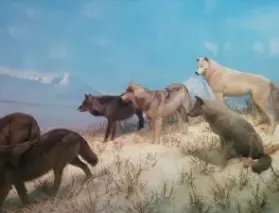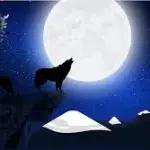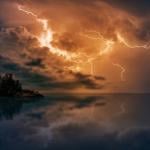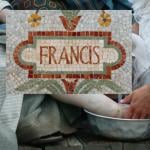 In several articles for SNS, I have written on cultivating our inner resources and how this can enrich our life. In particular, I have emphasized the cultivation of various forms of mindfulness, such as meditation and contemplation.
In several articles for SNS, I have written on cultivating our inner resources and how this can enrich our life. In particular, I have emphasized the cultivation of various forms of mindfulness, such as meditation and contemplation.
We live in an externally directed culture that provides few examples of people who have attained contentment through the cultivation of inner resources. We are more likely to find such examples in the Far East or medieval monasteries. If Western culture is out of balance in its predominant focus on the external, however, some of the Eastern and medieval traditions were out of balance in their focus on the internal. In emphasizing the internal I do not mean to disparage the external, but only to suggest that we might find in our lives a better balance of the two.
In a previous article published here, I used the terms “adventure, contemplation, and creation” in describing how I have attempted to balance the inner and outer in my life. As I mentioned in that article, these three correspond to the basic computing terms of “input, processing and output.” Under the aspect of these three terms, we can look at all “input” as an opportunity for adventure, all “processing” as an opportunity for contemplation, and all “output” as an opportunity for creativity.
While the computing terms “input, processing, output” refer to a mechanical process, the terms “adventure, contemplation, creation” point us toward a life enhancing, open-ended process. The kind of process that makes life seem more miraculous than mechanical.
* * *
One of my favorite books is Annie Dilliard’s, Pilgrim at Tinker Creek. Among many other things, the book provides a wonderful example of living life as adventure, contemplation, and creation. I will use a few examples from the book to expand upon what I mean by living life under the aspect of these three terms.
Tinker Creek is Dilliard’s equivalent of Walden Pond. Yet the area she is writing about is actually in the suburbs of Roanoke, VA. It is the kind of suburban natural area that most of us have access to, even if we live in the city. Yet each time she goes for a walk out along the Creek, she brings back something adventurous to report.
In the first chapter, she reports on an event, startling for her, that she witnessed while observing frogs in the Creek:
At the end of the island I noticed a small green frog. He was exactly half in and half out of the water…. He didn’t jump; I crept closer…. And just as I looked at him, he slowly crumpled and began to sag. The spirit vanished from his eyes as if snuffed. His skin emptied and drooped; his very skull seemed to collapse and settle like a kicked tent. He was shrinking before my eyes like a deflating football. I watched the taut, glistening skin on his shoulders ruck, and rumple, and fall. Soon, part of his skin, formless as a pricked balloon, lay in floating folds like bright scum on top of the water; it was a monstrous and terrifying thing. I gaped bewildered, appalled. An oval shadow hung in the water, behind the drained frog; the shadow glided away. The frog skin bag started to sink.
The oval shadow was a giant water bug, and she had witnessed it sucking the insides out the frog. Events such as this are common throughout nature, but we seldom witness them. Even a suburban creek is filled with little dramas. To witness them, or any of the endless variety of nature’s forms and activities, we have to make a point to be present, knowledgeable, and deeply attentive. And that is what it is to live adventurously.
Dilliard’s hikes along the Creek provide one aspect of adventure, but she gives another example through the reports of the books she reads. Reading can be used for simple amusement or even killing time, but Dilliard demonstrates reading and learning as an adventure. She reads great books and she reads them closely, connecting ideas and tropes from her reading to what she is witnessing on her hikes.
As just one example, shortly following the quote above, she writes:
In the Koran, Allah asks, “The heaven and the earth and all in between, thinkest thou I made them in jest?” It is a good question. What do we think of the created universe, spanning an unthinkable void with an unthinkable profusion of forms? Or what do we think of nothingness, those sickening reaches of time in either direction? If the giant water bug was not made in jest, was it then made in earnest?”
In a certain way, the whole book is a profound contemplation of questions like that, which gets us to the second of our terms. Pilgrim at Tinker Creek presents an ongoing contemplation that connects what Dilliard experiences in her wanderings along the creek with images and ideas from the books she is reading. Early in the book she reports: “Seem like we’re just set down here,” a woman said to me recently, “and don’t nobody know why.” Throughout the book, Dilliard contemplates that “why,” though she is wise enough to know there is no clear answer.
And the outcome of her adventures and her contemplations are the creativity of the book itself, which gives us the third term. Few of us can create a work of art to match Pilgrim at Tinker Creek. Yet we all can approach our activities with a spirit of creativity. Perhaps it is nothing more than cooking a meal, telling a story, or arranging a garden. If we live our life as an adventure and set aside time to contemplate our experiences, we will have something creative to say and do.
* * *
We do not need to go to the Maldives or the Himalayas to find adventure. This morning I saw a lovely Blackburnian warbler in the elm in my front yard. I could travel the world over and not see a more lovely bird.
And all of us have the ability to think more deeply, to contemplate about our life. Socrates famously said, “the unexamined life is not worth living.” I don’t agree with that sentiment – it’s not for any of us to judge the worth of another’s life. But I do think that the periodic examination of our life, in other words the contemplation of it, can be a great enhancement to the experience of living.
And just rearranging our lives so that we have time to get out in the world and explore, to read and contemplate, perhaps to write our experiences and thoughts in a journal. This is living more intentionally, more creatively. It’s not harder or easier than that.
* * *
I first read Pilgrim at Tinker Creek in the summer of 1976 while I was working as a naturalist in a state park in Minnesota. It took me the whole summer to finish it. Each time I started to read, it reminded me of how much there was to see outside. So I would put the book down and go out to explore. That summer was filled with interesting experiences. One experience in particular sticks in my mind; Dilliard’s quote about the giant water bug reminds me of it.
One of my fellow naturalists was a herpetologist. He asked me one day if I would like to go out with him later that night to look for amphibians and reptiles. I quickly said yes. He woke me at about one o’clock and we went to a nearby pond. There was a full moon, and the water of the pond glistened in the moonlight. But we quickly noticed that something else was glistening there.
We finally got close enough to see what it was. All around the pond water scorpions were climbing out of the water and up the reeds. I would never have imagined that there were so many water scorpions in such a small pond. But there they were, crawling up on the stems of the reeds, their wet bodies glistening like jewels in the moonlight. We were witnessing a water scorpion orgy; the singular night of the year for their mating. It was one of the creepiest things I’ve ever seen and one of the most sublime. It’s the kind of thing you might see, nowadays, on a nature program. But what a great difference between seeing it in the flesh and seeing it on a screen.
* * *
There is scarcely a paragraph in Pilgrim at Tinker Creek that isn’t quote-worthy. But I’ll finish with just one more quote from the book. The context of the quote is seeing a beetle accidentally flipped over on its back, its little legs kicking helplessly:
We have not yet encountered any god who is as merciful as a man who flicks a beetle over on its feet.
Subscribe to The Spiritual Naturalist Society
Learn about Membership in the Spiritual Naturalist Society
__________
The Spiritual Naturalist Society works to spread awareness of spiritual naturalism as a way of life, develop its thought and practice, and help bring together like-minded practitioners in fellowship.



